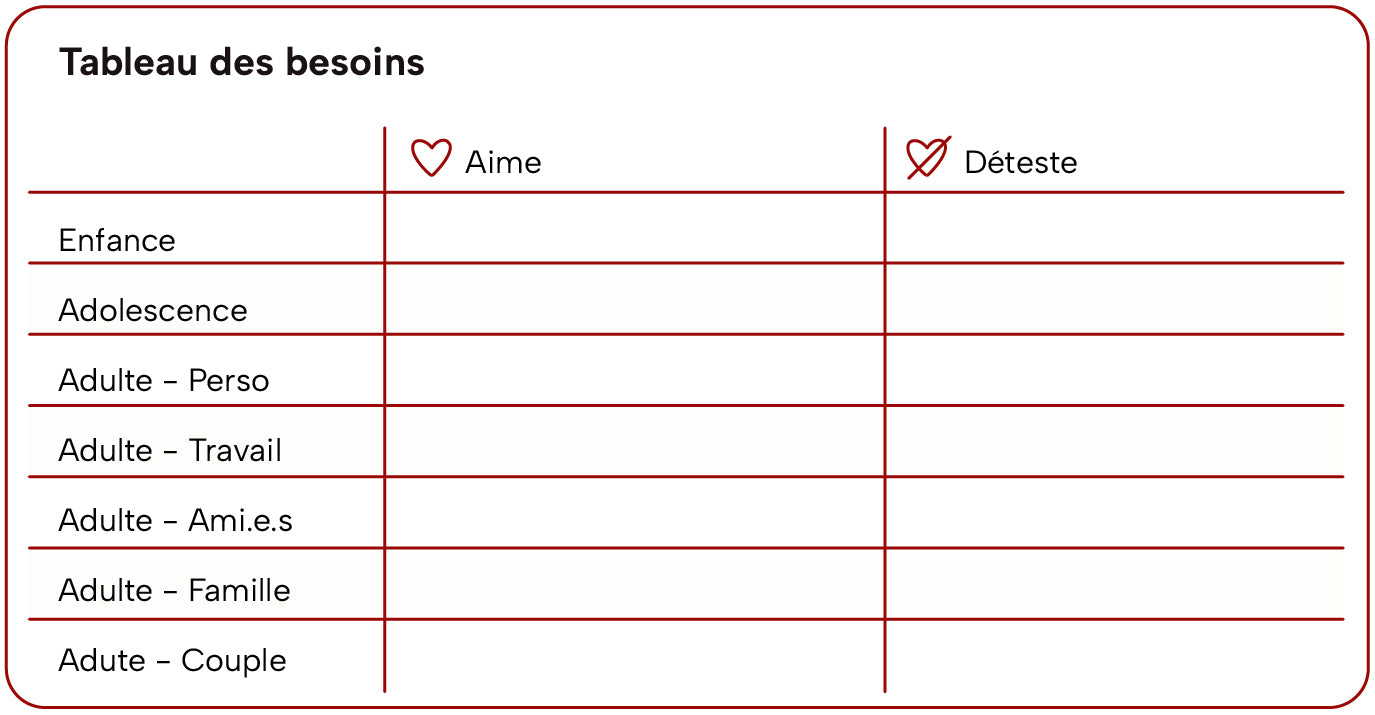"I often forget to take care of myself in my relationships." "I'm tired of taking care of other people's needs before my own." "I've given everything I have."
Sound familiar?
Our relationships can be complex and draining, even toxic. But they can also be healthy, meaningful, and fun when we're mindful of our needs and aware of our value.
Claudine Langlois, an occupational therapist by training and a human-connection fairy, recently shared how people can be fulfilled in their relationships, both with themselves and other people.
The four attachment styles
The way we position ourselves in our romantic relationships (also called our "attachment style") is influenced by a number of factors:
- our level of anxiety (from very to just a little)
- our level of avoidance (from wanting to be very close to someone to wanting a lot of independence)

Preoccupied attachment
This attachment style is characterized by a high level of anxiety and a low level of avoidance.
People with this attachment style will look for security at all costs. If they don't get a response to a text a few seconds after sending it, they think the sky is falling. They think their partner doesn't want to talk to them anymore, has heard rumours about them, or, worse, has been in a car accident. 😱
People with this attachment style are hypersensitive. They often have low self-esteem and little sense of their own value. This can translate into a lack of trust that damages their relationships.
Avoidant/fearful attachment
This attachment style is characterized by high levels of anxiety and avoidance.
People with this attachment style don't need anyone and privilege their independence above all. As soon as their partner becomes emotionally attached, they start looking for a way out. They don't want to get involved in anything serious, and when they do, they tend to be suspicious.
These are often people who suffer the most but don't even know it.
Detached attachment
This attachment style is characterized by a low level of anxiety (or maybe it's just that detached people don't exhibit their anxiety) and a high level of avoidance.
People with this attachment style have learned that in a society that values independence, it's important to be a "strong and independent person."
They have a lot of self-confidence, but they often project mixed signals, taking an interest in people who don't reciprocate and turning away from people who take an interest in them.
Secure attachment
This attachment style is characterized by low levels of anxiety and avoidance.
People with this attachment style aren't afraid of intimacy, but they don't feel anxious when their partner wants a bit of space.
They love unconditionally and without expectations. Sounds a little utopic in a society that teaches us not to trust people and to be cautious with our love . . . but it's possible!
People with this attachment style trust in the flow of life, and they understand something of immense importance: people can have space without being distant.
In short, this is the attachment style we all strive toward.
Toward secure attachment: An inventory of your needs
The keywords here are "communication" and "vulnerability."
We're not born with an instruction manual that says, "Okay, this is how you function." We have to figure that out ourselves, and once we do, we have to communicate it to our partners.
Did you catch the critical part? We have to figure out our own needs first!
Here's an easy way to do exactly that.
1. Make an inventory of your likes and dislikes
This inventory is the key to understanding your inherent needs.
Write down what you've liked and disliked throughout your life. Make sure you separate your adult life into 5 sections (your 5 lives): personal, work, friendships, family, love.

2. Find your hidden needs
Behind everything we love and hate lies a secret need.
To put your finger on it, use the "how come" method (it always works!).
For example: As a teenager, I hated school.
How come?
Because I didn't like authority.
How come?
Because I wanted to be free.
Pssst! With time and work on yourself, you'll learn how to distinguish between your soul and your ego. Both live inside you. It's important to recognize them and distinguish between them, or the needs of your ego will always overtake those of your soul.
Next, it's about putting the needs of your soul before those of your ego. 🙏
3. Make a list of your 5 fundamental needs
As you do the above exercise, you'll probably notice that certain needs keep popping up. Make a list of the 5 that come up the most often. These are your values, your roots, your pillars for navigating the relationship.
You can also try ranking them from most to least important.
Now you're ready to communicate them to your partner!
What's a toxic relationship?
There aren't necessarily toxic relationships - there are relationships without communication and with too many expectations.
When communication pathways are well established from the get-go and there are no unspoken expectations, there's a way better chance that everyone's needs will be met.
We shouldn't expect our partners to meet all our needs. Rather, we want them to give us space to do that work ourselves.
Plus, everyone comes to a relationship with their own interests and passions. In a toxic relationship, one partner expects the other to become like them.
You like surfing, festivals, and carnivals, and your partner likes fashion, Netflix, and afternoon naps? If you're going to get along, the key is not to try transforming each other but to accept that you have different interests. And of course, healthy relationships require some interests in common!
If you change your values and beliefs for someone, that's where the toxicity creeps in.
Your relationship with yourself: How can you give yourself the love you need?
Effective self-love is finding out how to take care of your own needs without constantly depending on others.
They key is to open up an equilibrium in your life that lets you have time to address your fundamental needs.
In concrete terms, self-love can be:
- Making space for yourself in your schedule: Go on a date alone.
- Yoni massage/auto-massage: Reconnect with your body, and let yourself enjoy a bit of personal pleasure.
- Look at yourself in the mirror and say something nice: It can feel a bit silly, but when's the last time you gave yourself a compliment?
- Plan a nice meal: Why not make yourself a fancy dinner?
- Understand that every time you say yes to something, you say no to something else: What do you want to say and why?
All of our relationships reflect who we are, so choose your mirror carefully, and make sure you pick one that makes you look your best!
Some resources:
The Enneagram Personality Test
To learn more about Claudine Langlois: Instagram, website, Pateron, Doshayoga Community.
















